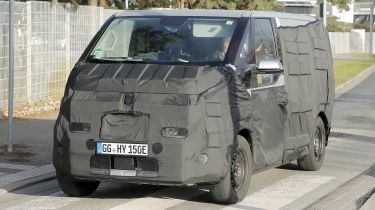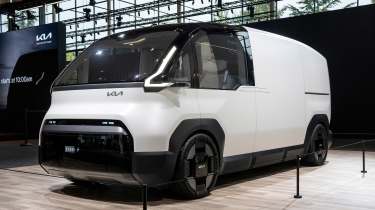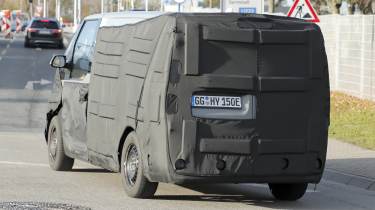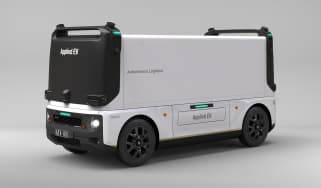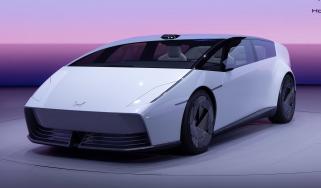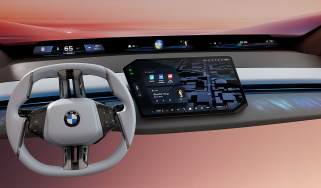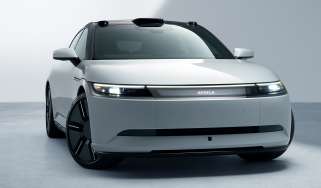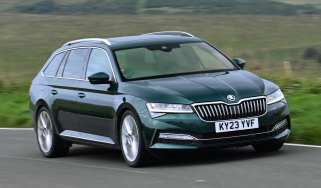New Kia PV5 electric van spotted ahead of 2025 launch: the Ford Transit had better watch out
This will be Kia’s first electric van, but there’s plenty more on the way, all based on a modular architecture that can accommodate vans of various sizes and body types
This summer, Kia will bring its knowledge and expertise of electric cars to the world of vans with the all-new Kia PV5 – the first in a range of purpose-built, all-electric commercial vehicles that could pose a serious threat to the Ford E-Transit family.
The Kia PV5 is a medium-size panel van, meaning it’ll be a direct rival to the Ford E-Transit Custom and the Volkswagen ID. Buzz Cargo – both of which have won our Electric Van of the Year award. There’s also the Vauxhall Vivaro Electric to contend with, plus its re-badged sister models from Peugeot, Citroen, Fiat and Toyota, as well as electric versions of the Renault Trafic and Nissan Primastar.
Kia’s concept cars receive very few styling changes before they reach production, and based on these images, the same will apply to its vans. The Concept PV5 revealed at CES 2024 previewed a bold, futuristic design that combines a simple one-box shape with an extremely stubby front end, large windows to maximise forward visibility and super-slim LED lighting influenced by the brand’s latest electric cars like the EV9 and EV3.
The windscreen doesn’t appear to be quite as large on the prototype as it was on the concept model, however one detail that has been carried over are the small quarter-windows. Despite the massive side windows, we can’t get a good look inside the PV5 just yet.
Kia says it will also launch high roof, chassis cab and crew cab versions of the PV5, plus a people carrier model that will serve as a rival to the Volkswagen ID.Buzz – and you can see what it’ll look like thanks to our exclusive image.
The various PV5 models are all designed to perform different tasks. The people carrier is designed for ride sharing use, and is tall enough that passengers can stand up inside. The high-roof version, on the other hand, is a typical van with a walk-through to the cargo area to boost its practicality.
Finally, there’s the robotaxi, which showcases the PV5's electronic tech, and the scope for autonomous driving systems that can be added to the platform.
Concepts of the various PV5 models shown at last year’s CES in Las Vegas showcased the company's 'Easy Swap' technology, which is designed to switch different 'life modules' into the back of a chassis cab-style platform.
The Easy Swap tech uses standardised electromagnetic and mechanical couplings to ensure security, while the platform's modular construction features high-strength tubular steel and engineered polymers that reduce typical part counts by 55 per cent, while maintaining chassis rigidity.
However, as we mentioned, Kia isn’t just planning to launch one electric van. The Kia PBV (which stands for Platform Beyond Vehicle) is the name of the overall commercial vehicle strategy that Kia is developing, and two other models have already been shown in concept form.
The PV7 is a typical large van like a Ford Transit or Renault Master, while the PV1 is designed as an autonomous small urban delivery vehicle, similar in size to a Citroen Ami, and features pivoting wheels at all four corners so that it can turn in its own length. These are meant to arrive in 2028/29.
Another model, the PV3, was teased at CES, which is a more conventional small electric van in the mould of the Renault Kangoo and Citroen Berlingo, although no more details were forthcoming on that model.
New Kia PBV platform
Every Kia PBV will use an EV-dedicated platform that the company has developed, and has been designed to accommodate different wheelbase lengths, plus a wide variety of vehicle sizes and body types.
Kia has confirmed its PBVs will charge at up to 22kW from an AC power source like a wallbox, or 150kW from a DC rapid charger. They will also have vehicle-to-load (V2L) capabilities, allowing them to power electrical devices like tools or even refrigeration units. Meanwhile, Kia is working with several partners to develop specialised PBVs for specific needs.
Marc Hedrich, president of Kia in Europe, believes “In order to disrupt the LCV market, an all-in approach is needed to maximise the benefits of a dedicated platform for a wide range of customers.
“While this approach is not a first for electric passenger cars, it’s certainly the first time we see it for LCV. This is a benchmark moment, and our PBVs are set to deliver better accessibility, higher volumes, and lower running costs, to completely change logistics and mobility.”
When it’s launched, the PV5 will include advanced software connectivity as a precursor to introducing autonomous driving and delivery services. This is the initial phase of Kia's commercial vehicle plans, with phase two introducing the PV7 and PV1, as well as integrated AI and fully customisable systems that will be able to accommodate any use case possible, according to Kia.
Phase three will see the introduction of bespoke mobility solutions and connected self-driving vehicles that are part of a 'smart city' system, which is seen as an essential step on the path towards autonomous driving technology.
Click here for our list of the best medium panel vans...

